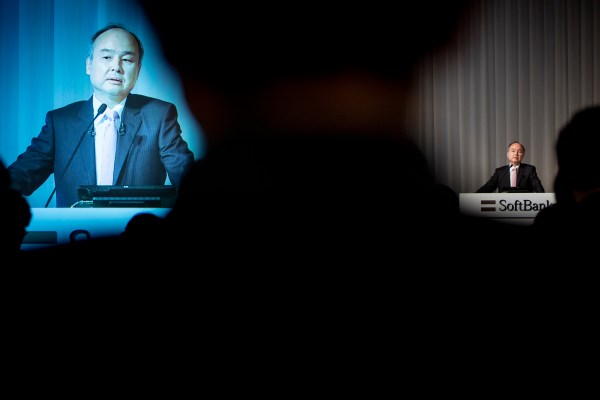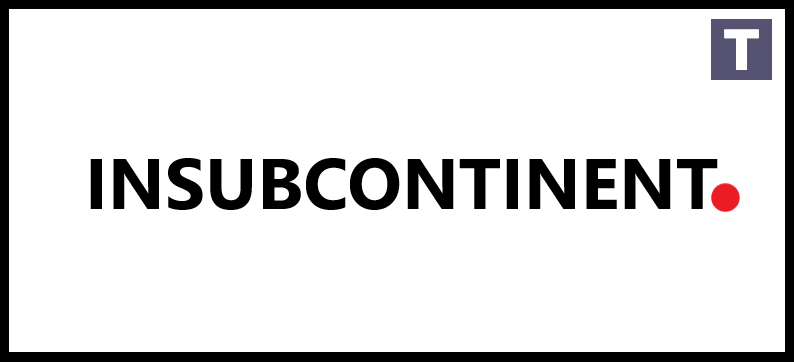Music
Trailers
DailyVideos
India
Pakistan
Afghanistan
Bangladesh
Srilanka
Nepal
Thailand
StockMarket
Business
Technology
Startup
Trending Videos
Coupons
Football
Search
Download App in Playstore
Download App
Best Collections
Technology

Japanese telecom conglomerate SoftBank Group has faced a litany of bad news in recent weeks, including reported revelations from the Wall Street Journal that the head of its Vision Fund was using corporate espionage firms to sabotage his corporate peers and that activist hedge fund investor Elliott Management had invested in the company to try to force more transparency to its balance sheet and board of directors in a bid to drive its stock price higher.
The bad news just keeps coming though.
Today, S-P Global Ratings downgraded the groupdebt outlook to &Negative& from &Stable& while affirming the debtrating of BB+, which is generally considered somewhat speculative or non-investment grade.
In the note from the ratings agency, S-P said that it was particularly concerned about SoftBankshare repurchase program, which would see cash liquidity decrease as it buys up shares from investors on the public markets. That program, which would encompass about $4.8 billion in share buybacks and was announced last week, &[raises] questions over its intention to adhere to financial management that prioritizes its financial soundness and the credit ratings on it.&
My colleague Arman and I have covered SoftBankdebt obsession obsessively on TechCrunch, but we last conducted that analysis at the tail end of 2018 when markets were still soaring and SARS-CoV-2 had yet to be discovered.
Now though, SoftBankpenchant for debt is running straight into one of the most harrowing moments in recent economic history.
SoftBankdebt-fueled expansion is particularly notable in its Sprint and T-Mobile telecom merger, which was recently approved by U.S. antitrust authorities and included tens of billions of dollars of debt to consummate, as well as in the Vision Fund, where special provisions in the fundstructure guarantees a minimal level of return to investors. As the Financial Times reported back in 2017:
That debt provided by the Vision Fundinvestors will be in the form of preferred units, which will receive to an annual coupon of 7 per cent over the fund12-year life cycle.
Yet, with few IPOs likely on the horizon given the catastrophic fall in the markets the past few days, what will happen to liquidity in the Vision Fund, and how will it meet that 7% minimum target? Or how will the combined Sprint and T-Mobile win over customers in a quickly souring economy to pay off down its gargantuan debt load?
The upshot for SoftBank is that it offers a service most customers consider essential. Thatone of the reasons why its debt hasn&t seen a ratings downgrade: ultimately, consumers are still going to need their smartphones to work. But with the piles of debt adding up and the economy in tatters, its future is looking evermore hazy and dangerous.
- Details
- Category: Technology Today
Read more: SoftBank’s debt outlook turns negative
Write comment (92 Comments)
By now we know that Kubernetes is a wildly popular container management platform, but if you want to use it, you pretty much have to choose between having someone manage it for you or building it yourself. Spectro Cloud emerged from stealth today with a $7.5 million investment to give you a third choice that falls somewhere in the middle.
The funding was led by Sierra Ventures with participation from Boldstart Ventures.
Ed Sim, founder at Boldstart, says he liked the team and the tech. &Spectro Cloud is solving a massive pain that every large enterprise is struggling with: how to roll your own Kubernetes service on a managed platform without being beholden to any large vendor,& Sim told TechCrunch.
Spectro co-founder and CEO Tenry Fu says an enterprise should not have to compromise between control and ease of use. &We want to be the first company that brings an easy-to-use managed Kubernetes experience to the enterprise, but also gives them the flexibility to define their own Kubernetes infrastructure stacks at scale,& Fu explained.
Fu says that the stack, in this instance, consists of the base operating system to the Kubernetes version to the storage, networking and other layers like security, logging, monitoring, load balancing or anything thatinfrastructure related around Kubernetes.
&Within an organization in the enterprise you can serve the needs of your various groups, down to pretty granular level with respect to whatin your infrastructure stack, and then you don&t have to worry about lifecycle management,& he explained. Thatbecause Spectro Cloud handles that for you, while still giving you that control.
That gives enterprise developers greater deployment flexibility and the ability to move between cloud infrastructure providers more easily, something that is top of mind today as companies don&t want to be locked into a single vendor.
&Therean infrastructure control continuum that forces enterprises into trade-offs against these needs. At one extreme, the managed offerings offer a kind of nirvana around ease of use, but itat the expense of control over things like the cloud that you&re on or when you adopt new ecosystem options like updated versions of Kubernetes.&
Fu and his co-founders have a deep background in this, having previously been part of CliQr, a company that helped customers manage applications across hybrid cloud environments. They sold that company to Cisco in 2016 and began developing Spectro Cloud last spring.
Itearly days, but the company has been working with 16 beta customers.
- Details
- Category: Technology Today

Hello and welcome back to our regular morning look at private companies, public markets and the gray space in between.
As investors struggle to price the stock market as economic and political news continues to break, the private market is entering a rough period. It seems increasingly likely that the period of disruption due to COVID-19 will persist for months, if not quarters. That means missed Q1 and Q2 revenue growth, bookings, and the like from startups domestically and around the world.
And thatthe bullish case. For some cohorts of startups, the outlook is even worse. Think about travel startups, ride-hailing upstarts, and any grouping of private companies that pursued a high-burn, high-growth model; that final category is about to run into the twin issues of the inflexibility of cost structure and the impact of slowing sales. That alone would make fundraising more difficult; toss in a deflating stock market and possible recession, and the mixture is a downright mess.
But we owe it to ourselves to survey what is going on in an attempt to answer our own questions about IPOs, exits, unicorn tallies, and who might be in trouble. Unlike when things were less bad, there will be no laughing this morning and no jokes. Just notes on whatgoing wrong and what it might mean for private companies.
- Details
- Category: Technology Today
Read more: Have numerous unicorns missed their exit window as Q1 IPOs grind to a stop
Write comment (96 Comments)
Is there an audience for a center-right news publication focused on original reporting and analysis? Thatthe proposition that The Dispatch set out to test when it launched last October, and the early results are promising. The startup says itnow approaching 10,000 paying subscribers, adding up to more than $1 million in annualized revenue.
Editor and CEO Stephen Hayes (former editor in chief of the now-defunct Weekly Standard) told me that his vision for The Dispatch was to &slow down the news cycle.& That doesn&t mean ignoring the dayheadlines. But rather than just recycling the same stories about, say, Bernie Sanders or the COVID-19 pandemic, The Dispatch aims to &take a breath& and try to approach important news in a fresh way.
In order to do that, Hayes said that building a subscription business with newsletter-focused digital media platform Substack (the Substack team also handles all of The Dispatchtechnical and product needs) was key.
&We&re not trying to monetize eyeballs,& he said. &What Substack was doing fit pretty much exactly with what we wanted to build — a company with an editorial-first philosophy.&
As part of that strategy, The Dispatch has gradually been rolling out its membership program and paywall. At launch, it offered a lifetime membership ($1,500), then added an annual membership ($100) when it launched its full site in January, and finally introduced a paywall and a monthly membership ($10) less than a month ago.
Hayes said itbeen largely &an ad hoc process& of figuring what should and shouldn&t go behind the paywall. Apparently, one piece of advice that has been helpful is, &Don&t hide your good stuff behind the paywall. You need to be serving some of your best, most substantive work in front of the paywall, so that you get people into the top of the funnel.&
On top of its paying subscribers, Hayes said The Dispatch is reaching about 60,000 people with its newsletters. And itpartnering with podcast company Sounder, with plans to participate in GooglePlay Me The News program for Google Home, where it will offer short-form audio news stories.
The startup has also raised $6 million in funding from individual investors (none of it comes from venture capital firms).
Hayes acknowledged that one of the constant questions he had to answer during the fundraising process was whether he was aiming for too narrow an audience — namely, the #NeverTrump slice of the political right.
It might look that way on &the traditional political spectrum,& but in Hayes& view, itmore accurate to see the spectrum as a &hardcore 15 percent& on the left and another 15 percent on the right that&more partisan than ideological& and will root for their party no more what. And while The Dispatch is &unapologetically center-right,& hehoping to appeal to the remaining 70 percent, who are looking for a publication that can &help you make sense of all this stuff that doesn&t make sense,& regardless of political leanings.
The Dispatch is in many ways the flagship among full-fledged news organizations built on Substack, but the list of publications now includes Asia Sentinel, LetGo Warriors and Write for California. The startup is also announcing that itnow reaching more than 100,000 paying subscribers across its platform.
Substack CEO Chris Best said that The Dispatchsuccess so far shows that there&ahunger out there.&
He added, &Are readers willing to pay for something that helps them make sense of the world and adds value to their lives? I think the answer is unequivocally yes.&
- Details
- Category: Technology Today
Read more: The Dispatch, a news organization built on Substack, passes $1M in annual revenue
Write comment (99 Comments)
Smart rings are still a relatively young category in the wearable hardware world, but the Oura Ring seems to be a standout in terms of early success. The Oura Ring hardware is sleek and packed with sensors, allowing it to measure a usersleep patterns, take your body temperature and track activity, and now Oura has raised $28 million in Series B funding to bring on new key hires and product updates.
In a Medium post announcing the raise, Oura CEO Harpreet Singh Rai revealed that to date, the company has sold over 150,000 of its rings since launch (which was in early 2018) and that its team has grown to over 100 people globally. The Series B funding comes from Forerunner Ventures, which has a strong track record when it comes to direct-to-consumer product company investments, as well as from Gradient Ventures and Square.
Along with the investment, Oura gains two new board members, and one new board observer all with expertise in different aspects of the startupbusiness: ForerunnerEurie Kim and Squarehardware lead Jesse Dorogusker are the new board members, and Gradient partner (and former VP of engineering at Google) Anna Patterson joins as the observer.
Oura will be revamping its website and adding a new web-based portal for Oura Ring users that offers &actionable insights,& the company says, and itgoing to be doing more in terms of collaborating with academic researchers on ensuring its products measurements and guidance remain as accurate and useful as possible.
Oura prioritizes the role of sleep in terms of its contribution to health, and has also recently ventured into the realm of meditation, but it acts as a general fitness tracking device as well. It has attracted a number of fans among the plugged-in tech elite, too, including Twitter and Square CEO Jack Dorsey. The company deserves kudos for delivering a solid, attractive and feature-rich gadget in a category that seemed like a tough sell in the early offing, and this new funding is a good vote of confidence.
- Details
- Category: Technology Today
Read more: Oura raises $28 million for its health and sleep tracking ring
Write comment (96 Comments)AMC this morning formally announced that it will close all locations in the United States for between six to 12 weeks, beginning today. The move comes on the heels of a partial shutdown by the largest theater chain in the U.S. last week and a similar announcement for competitor Regal last night. Regalannouncement was a less specific &until further notice.&
AMC currently operates 661 theaters in the States, comprising more than 8,000 screens. The move is major, but not unexpected, as people and companies deal with the realities of living through a pandemic.
Movie attendance has already begun dropping shortly as people have begun to practice social distancing. AMC and other events companies have had to grapple with both concerns over employee and attendee safety, as well as an increasing push on the part of cities and States to close down business and require citizens to stay home in order to curb the spread of COVID-19.
As it notes in a press release issued today, more than a states and cities have mandated such closures over the last few days. As part of the closure, the chain will pause payments on its A-List memberships during the months-long shut down. No word yet on whether the massive chain has a plan in place to support employees during the closure. We&ve reached out to the company for additional comment.
&We are ever so disappointed for our moviegoing guests and for our employee teams that the new CDC guidelines that Americans should not gather in groups larger than 10 people make it impossible to open our theatres,& CEO Adam Aron said in a release. &Still, the health and wellbeing of AMC guests and employees, and of all Americans, takes precedence above all else. We will continue to monitor this situation very closely and look forward to the day we can again delight moviegoers nationwide by reopening AMC movie theatres in accordance with guidance from the CDC and local health authorities.&
Meantime, the company is encourage housebound movie buffs to use its on demand service. Recently, NBCUniversal announced plans to offer new releases on-demand. Others will likely follow suit in the wake of these major closures.

- Details
- Category: Technology Today
Read more: AMC will close all US theaters for six to 12 weeks
Write comment (92 Comments)Page 1196 of 1418

 5
5





